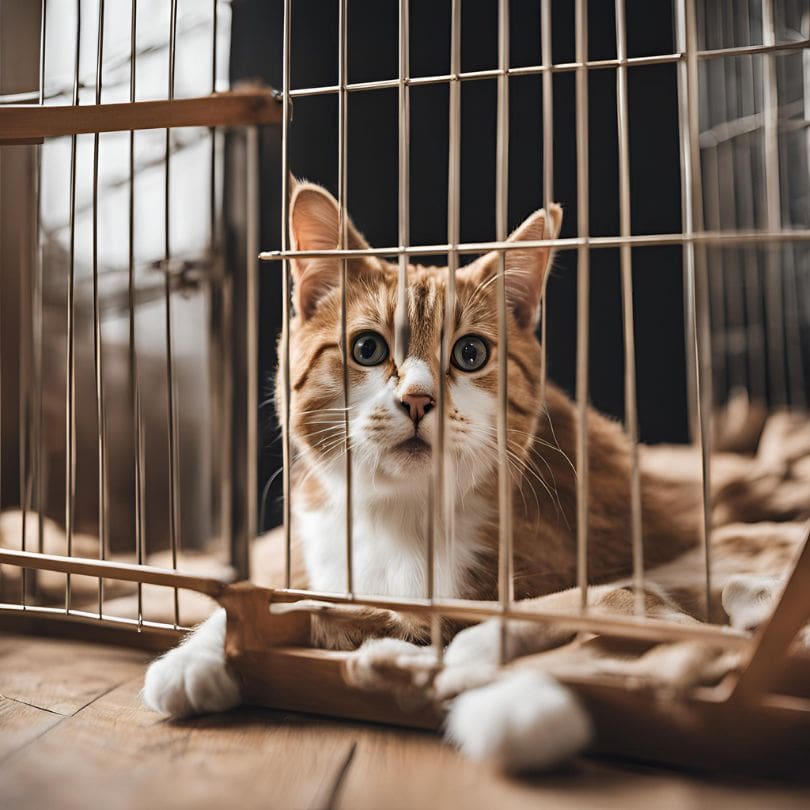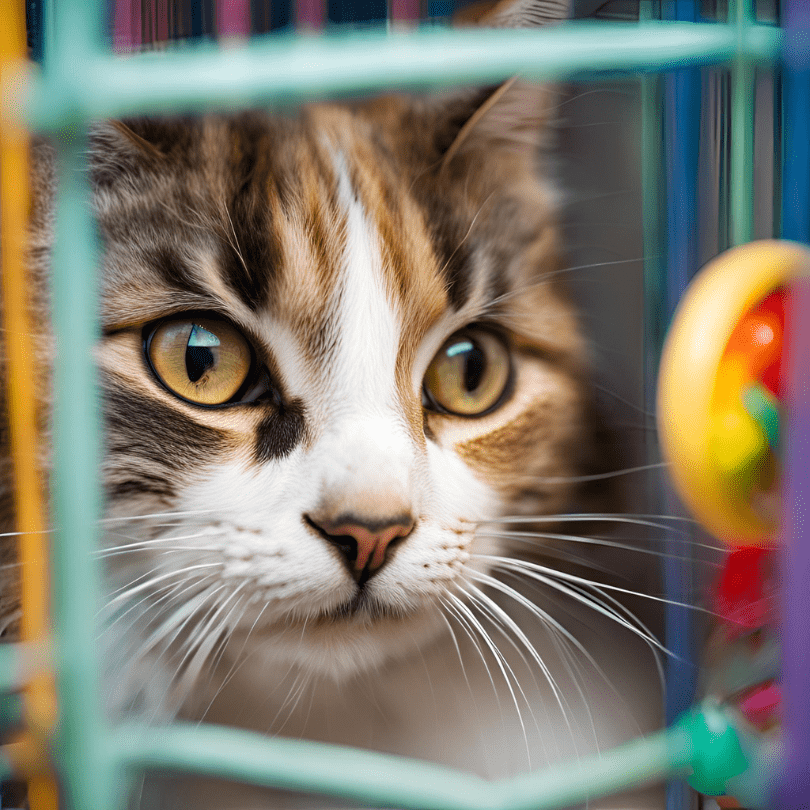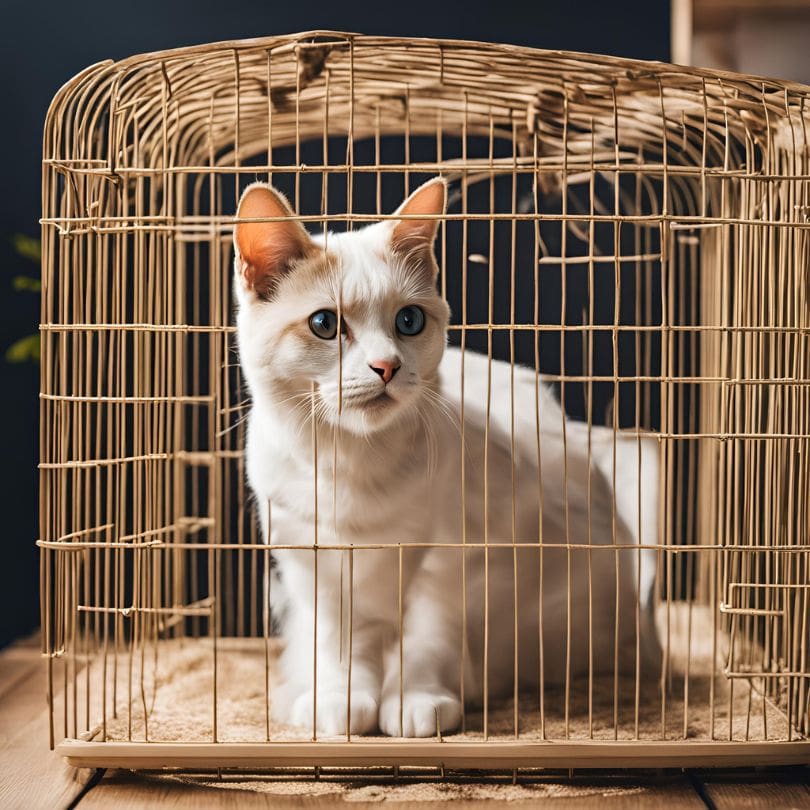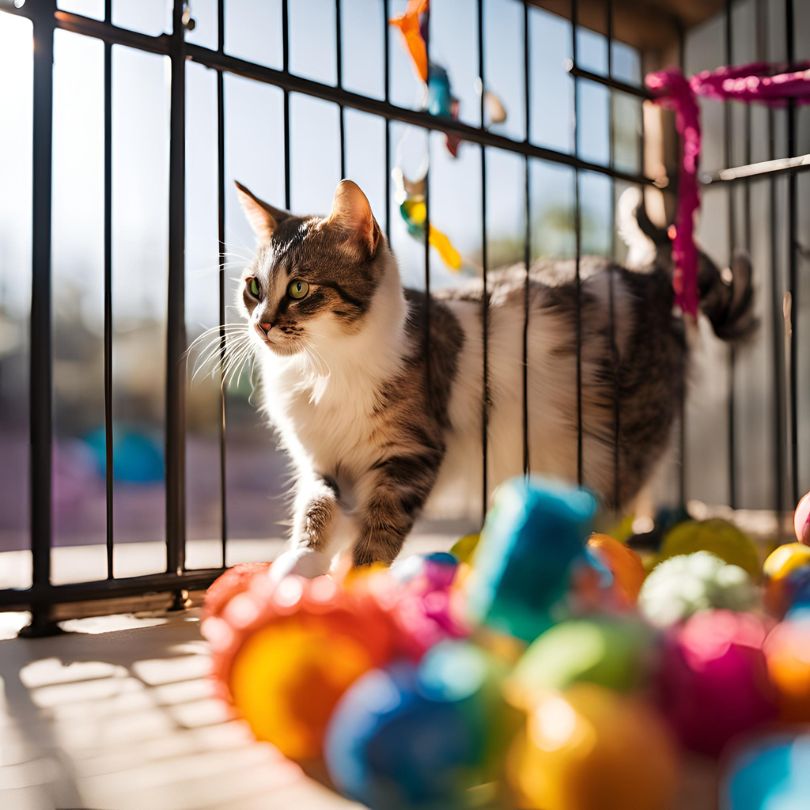When it comes to selecting the perfect cage for your cat, there are a few critical factors to consider to ensure it meets your pet’s size and personality needs.
Cats are known for their independence and specific preferences, and their cage should reflect these traits. From cage size and structure to the materials used, here’s a comprehensive guide on choosing a cat cage that suits your furry friend’s unique personality and size requirements.
1. Consider the Size of Your Cat
Cats come in various shapes and sizes, so understanding your cat’s size is essential for choosing a suitable cage. Here are a few aspects to evaluate:
• Height and Length: Your cat should be able to stand up, stretch, and move around without restriction. Measure your cat’s length from the tip of its nose to the base of its tail, and its height from paws to ears. Ideally, the cage should be at least 1.5 times the length of your cat.
• Weight Capacity: Some cages are designed for small or medium-sized cats, while others can accommodate larger breeds like Maine Coons. Check the weight capacity to ensure it can support your cat comfortably.
• Space for Movement: Cats are agile animals that enjoy moving around, even within confined spaces. A cage that’s too small can make your cat feel stressed or anxious, so prioritize space to ensure your pet feels comfortable and relaxed.

2. Select a Cage Based on Your Cat’s Personality
Just like humans, cats have unique personalities that influence their preferences for a cage. Here’s how to tailor your choice:
• Curious and Active Cats: If your cat is energetic and inquisitive, opt for a multi-level cage with platforms and climbing areas. This will keep your cat entertained and encourage exploration, helping to reduce boredom in confined spaces.
• Shy or Calm Cats: For more reserved or low-energy cats, a single-level cage with hiding spots and cozy corners can create a sense of security. Cats that are naturally timid often prefer a private, quiet space where they can retreat.
• Social Cats: If your cat is social and enjoys human interaction, choose a cage with a large door or open areas that allow you to interact easily. Some cages come with removable partitions, allowing you to adjust the setup for better bonding time.
3. Choose Durable and Safe Materials
When choosing a cat cage, pay close attention to the materials used. Your cat’s safety and comfort should be your top priorities.
• Strong, Non-Toxic Materials: Look for materials that are safe and free of toxic substances. Stainless steel or heavy-duty plastic are both durable and cat-friendly options.
• Easy to Clean: Cats are sensitive to smell, so it’s important to keep their cage clean. Choose materials that are easy to wipe down, and look for cages with removable trays or floors that can be cleaned and sanitized regularly.
• Secure Latches and Doors: Ensure that the cage has sturdy latches and doors to prevent your cat from escaping. Active cats might try to open doors, so double-check the strength and security of the cage design.

4. Think About Portability and Placement
Whether you’re using the cage for travel or home confinement, its portability and location are essential considerations:
• Portable Cages for Travel: If you frequently travel with your cat, look for a lightweight, foldable cage. Many portable options also come with handles, making transportation more manageable.
• Stationary Cages for Home Use: For a more permanent setup at home, you may want a larger, stationary cage with ample room. Place it in a quiet, warm corner where your cat can observe their surroundings without being overwhelmed by foot traffic or loud noises.

5. Look for Additional Features and Accessories
Extra features can make a big difference in your cat’s cage experience. Here are a few add-ons that can make your pet’s life more comfortable:
• Removable Shelves and Platforms: Multi-level cages with shelves allow your cat to climb, rest, and play. These platforms should be adjustable and sturdy.
• Hammocks or Cushioned Beds: Many cages come with a built-in hammock or soft bed, which is a nice touch for cats who love lounging. A comfortable sleeping area can make the cage feel more inviting.
• Built-in Food and Water Bowls: Some cages offer fixed areas for food and water, which can prevent spills and keep the cage tidy. Make sure they’re at a height that’s accessible and comfortable for your cat.
6. Balance Between Comfort and Ventilation
Cats need adequate ventilation, especially if they’ll be spending long hours in the cage. Look for a design that provides airflow without compromising privacy.
• Proper Ventilation: Make sure there are enough open spaces or mesh areas to provide airflow. This will help keep your cat cool and reduce any odors from lingering.
• Privacy Panels: Some cats appreciate privacy and may feel safer in a cage with partially covered walls. This allows them to feel protected while still benefiting from ventilation.
Choosing the right cat cage requires understanding your cat’s unique needs and personality. By considering size, personality, materials, and additional features, you can select a cage that keeps your cat safe, comfortable, and happy. Remember, a well-chosen cage can be a sanctuary for your cat rather than a prison. Prioritize your pet’s well-being, and you’ll find that a good cage can become a cozy haven where your feline friend feels right at home.

